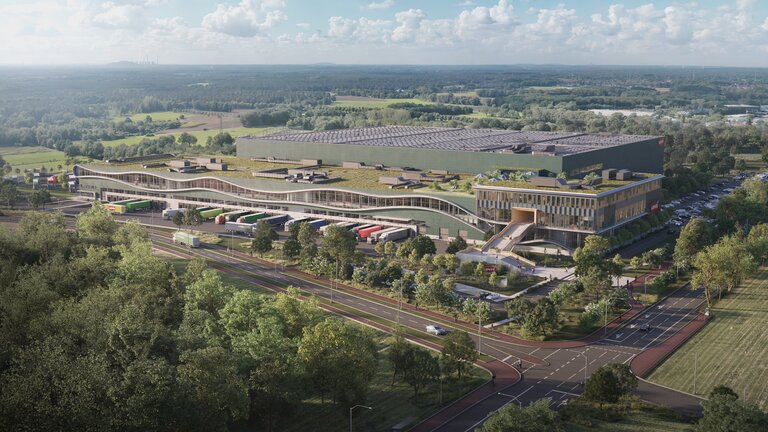While consumers’ minds are on deciding which denims to wear tomorrow morning, global jeanswear market leader Levi Strauss & Co. is already thinking about the day after tomorrow. In the Große Heide Wulfen industrial estate in Dorsten, on the northern fringe of Germany’s Ruhr area, a sustainable logistics hub for the European market is under construction. The main focus of the building company, Delta Development, is on recyclability. This places high demands in terms of the construction, as the building is meant to act as a kind of raw materials depository which, at the end of its useful life, releases its materials for new projects. To assist in meeting this challenge, Delta brought on board a team of experts in recyclable products from Drees & Sommer subsidiary EPEA.
Resource management at the new logistics center is not only focused on the construction method. There is also a system for collecting rainwater, storing it in an underground tank and using it to water the roof planting as well as to flush toilets. Also, on-site recycling facilities are being built to minimize day-to-day waste.
Renewable Energy from the Sun and the Earth
For the logistics building to operate sustainably, the energy design is of key importance. The warehouses can be heated and cooled efficiently with the aid of a geothermal heating and cooling system. 100-meter-deep boreholes in the ground enable the use of heat generated within the Earth. Solar panels are also installed on most of the roof surfaces so that the building can produce its own electricity.
At peak times, any surplus electricity produced can be fed into the national grid, and other buildings can also be supplied with climate-friendly electricity. On the areas of the roof not being used to produce solar energy, staff members can go out for a breath fresh air among poppies and cornflowers. The roof garden with its native wildflowers is not only intended to provide room for a multitude of insects; In addition to adding biodiversity, the planting is designed to filter pollutants from the surrounding air and create a pleasant microclimate.
More information in our press release.

